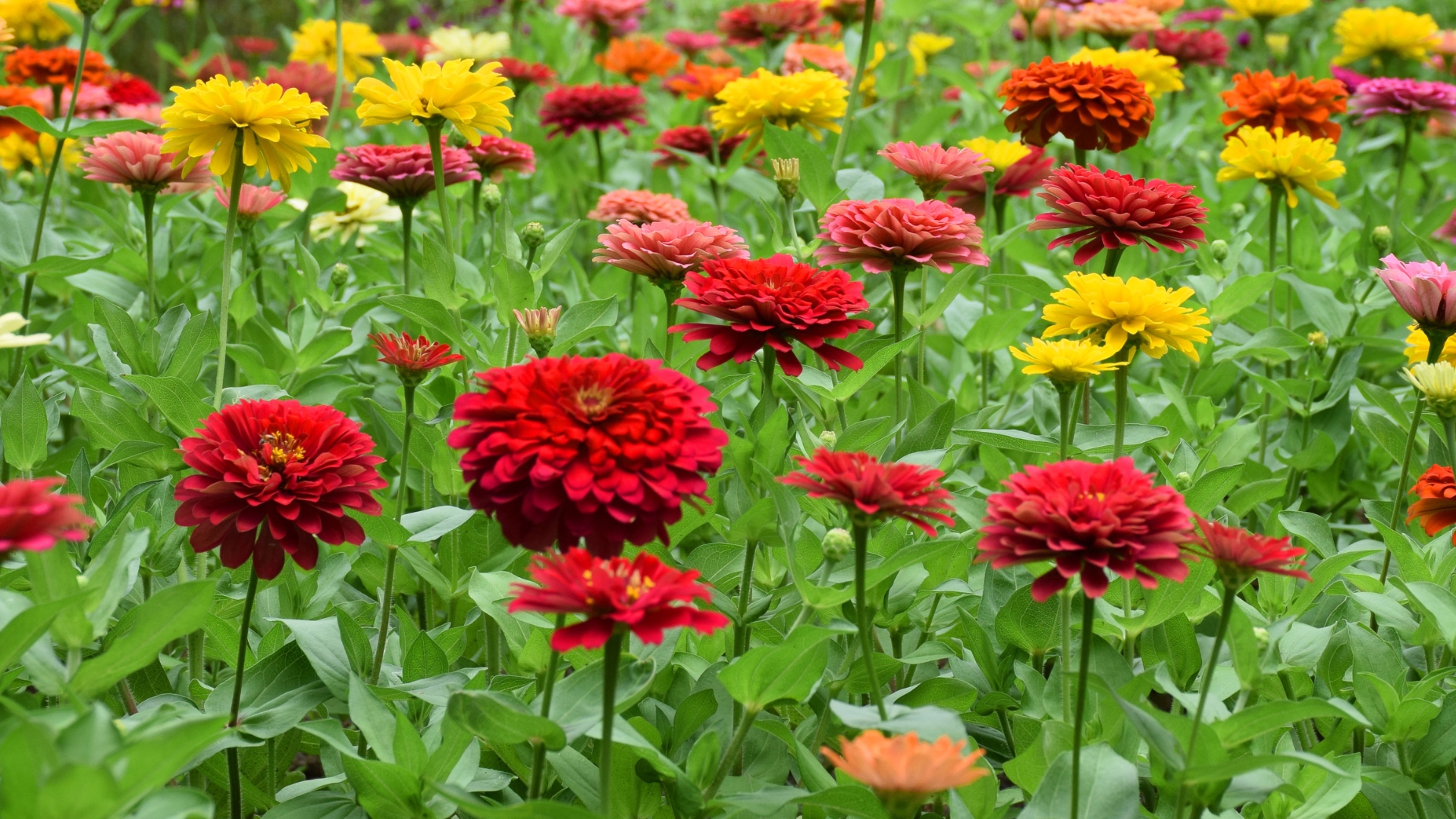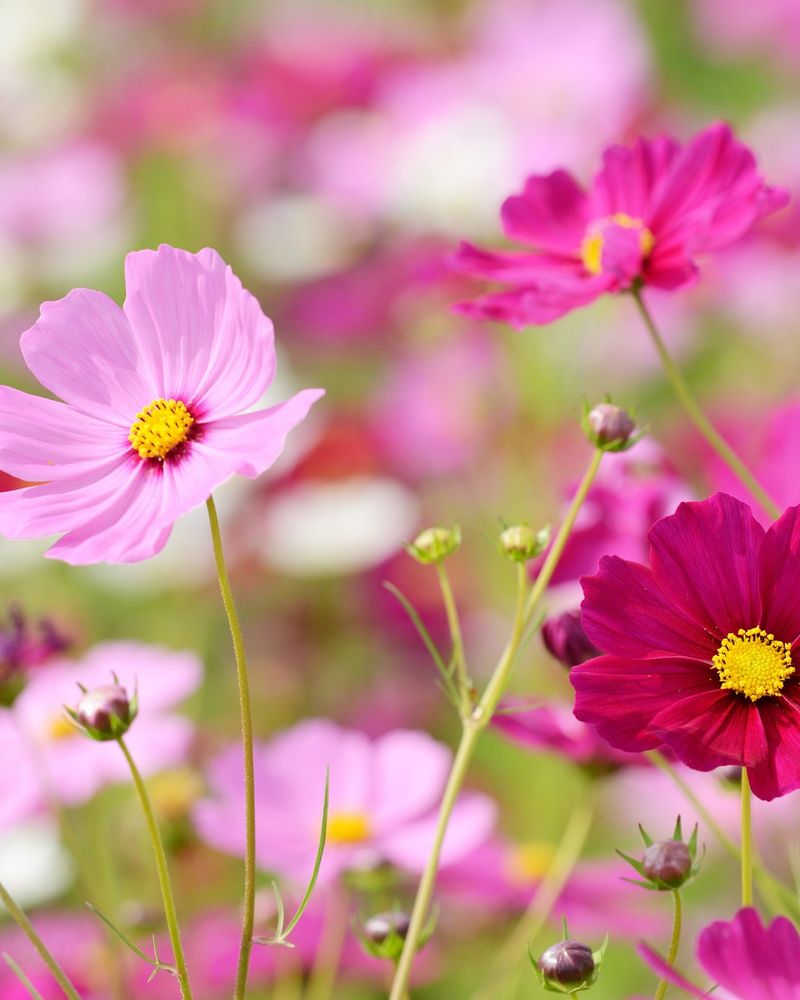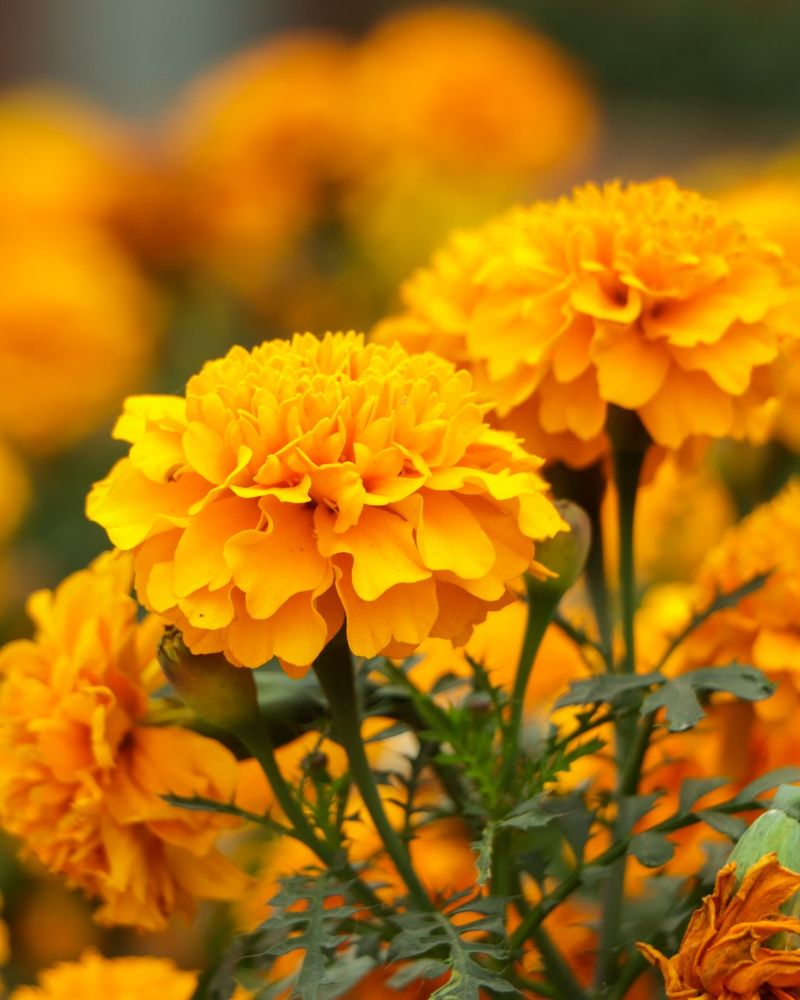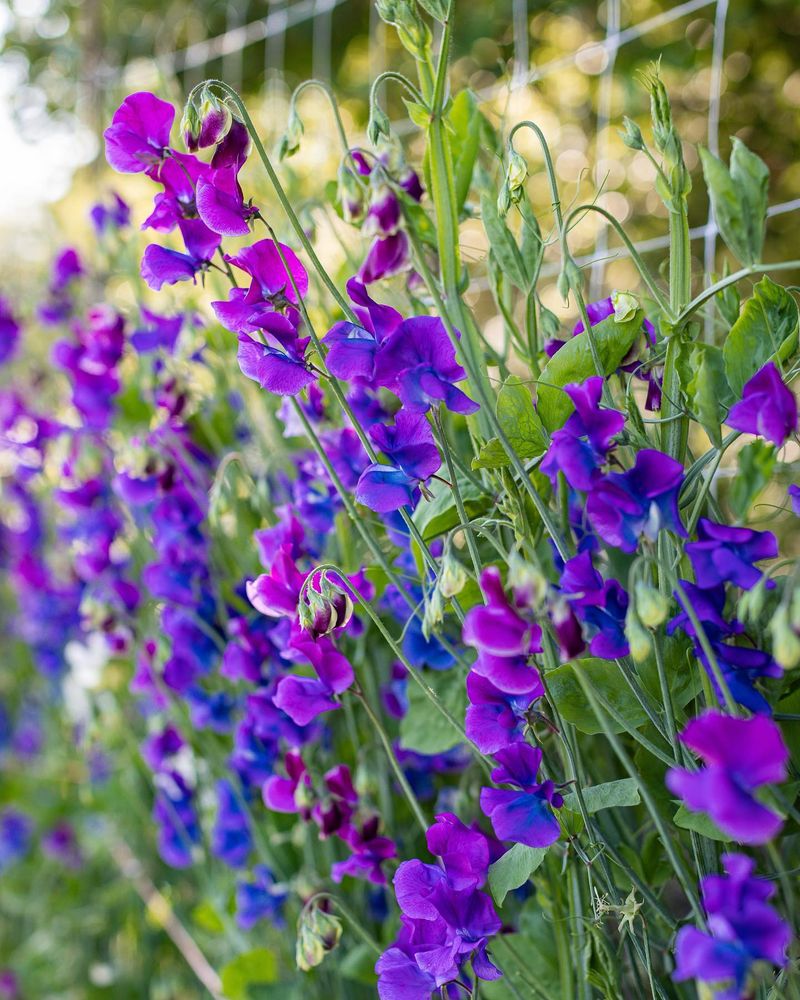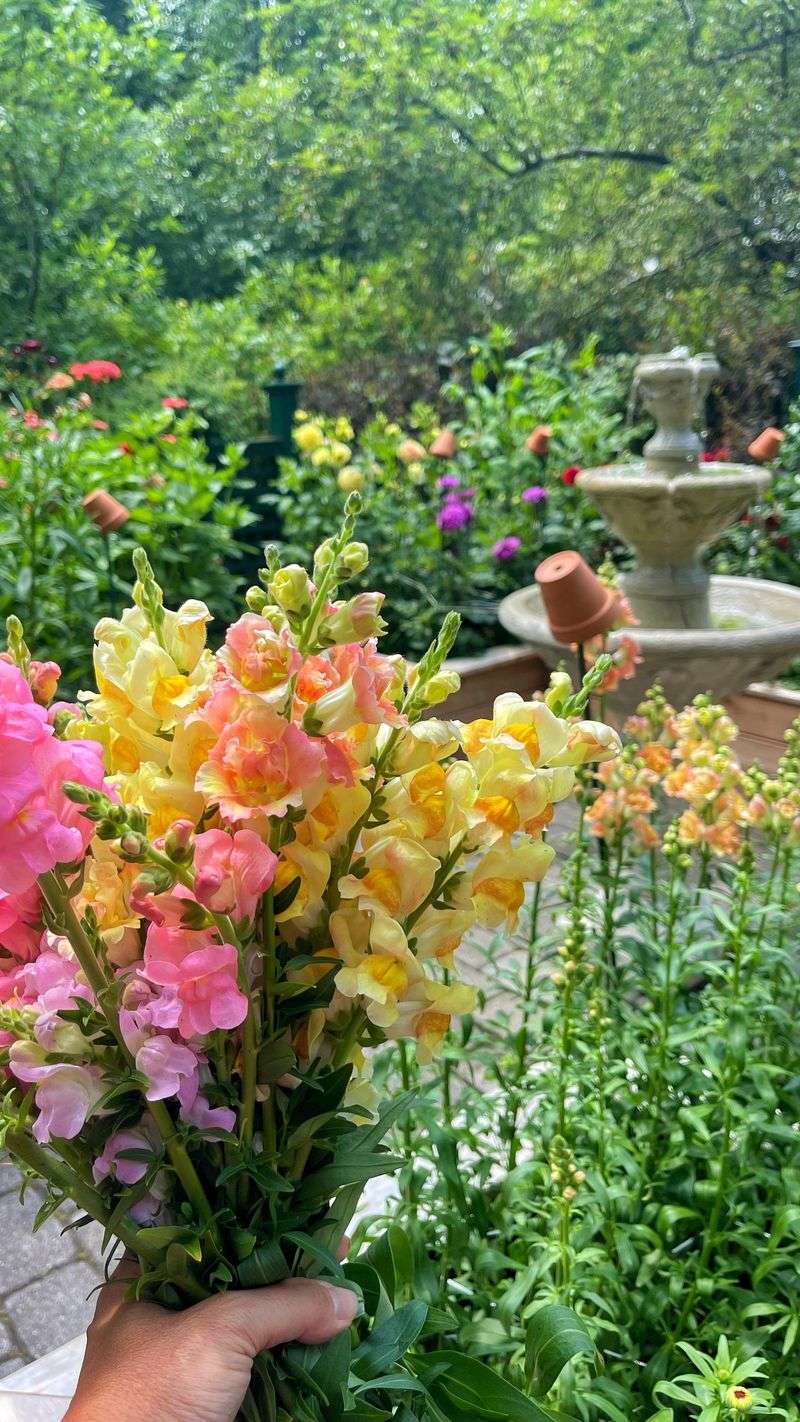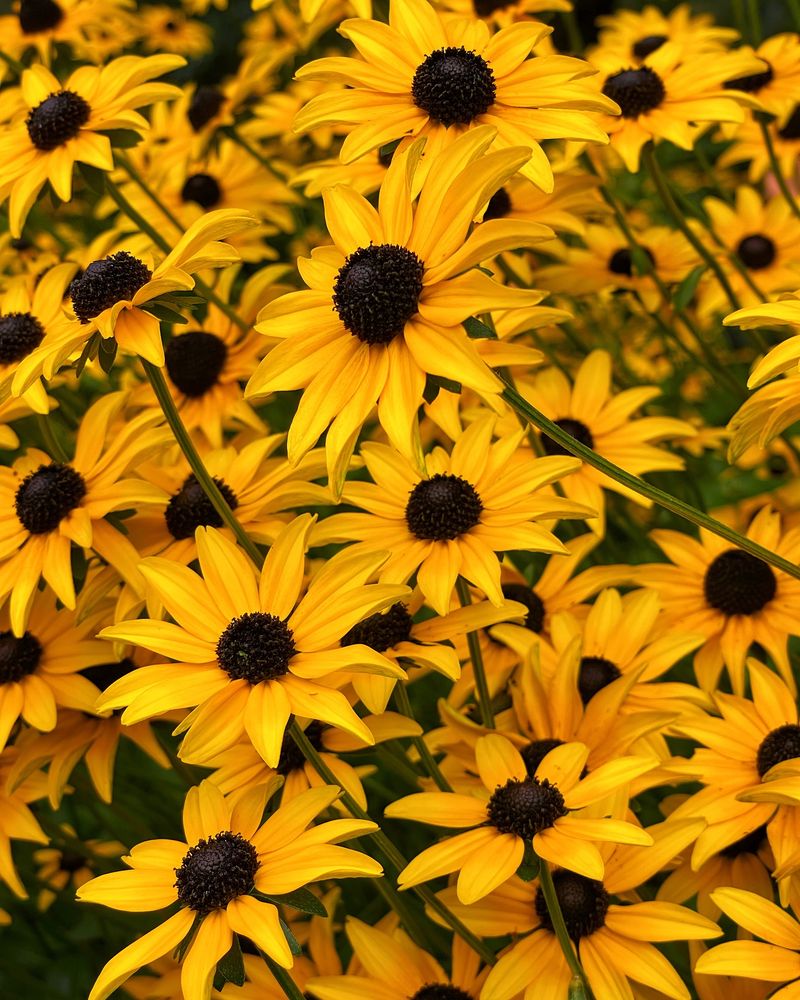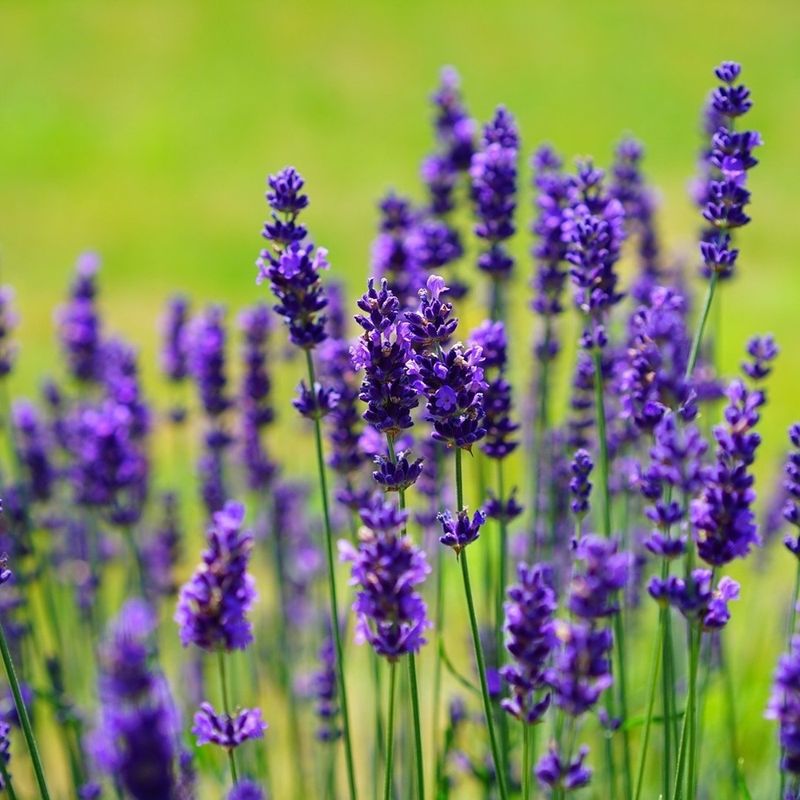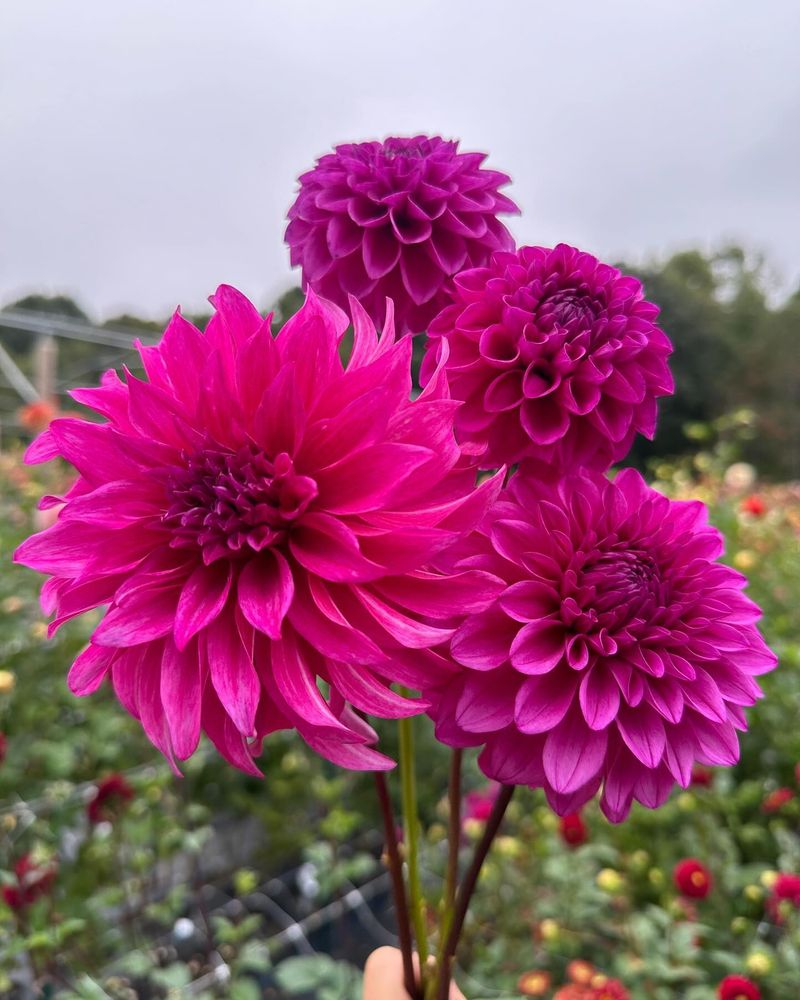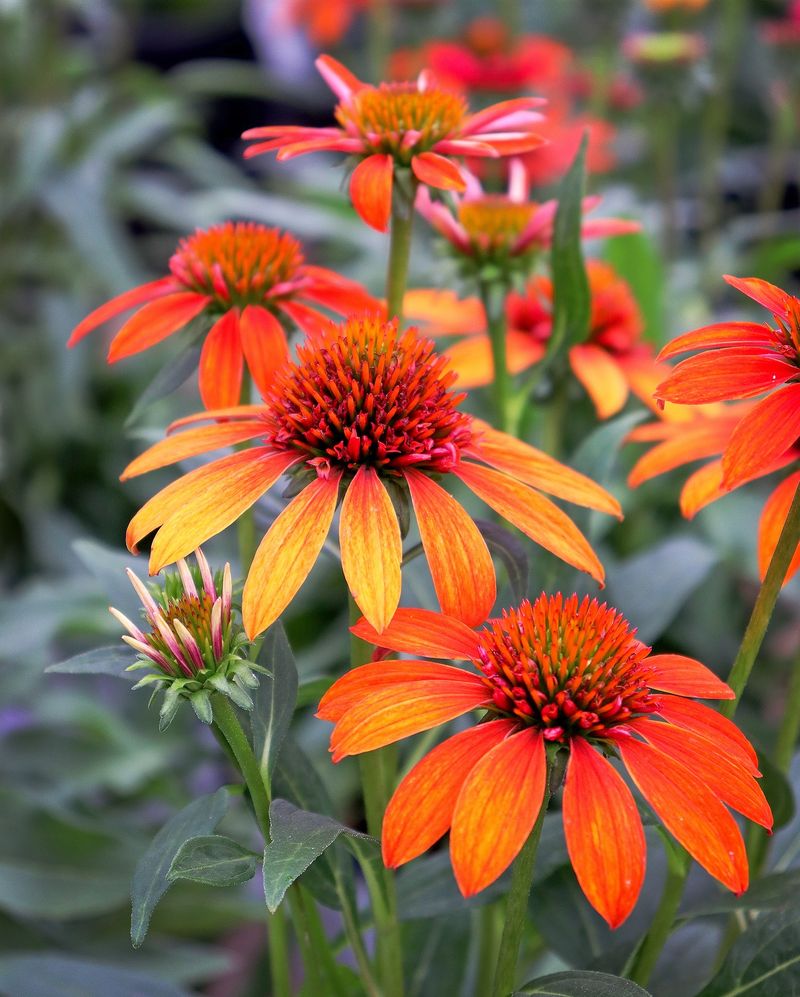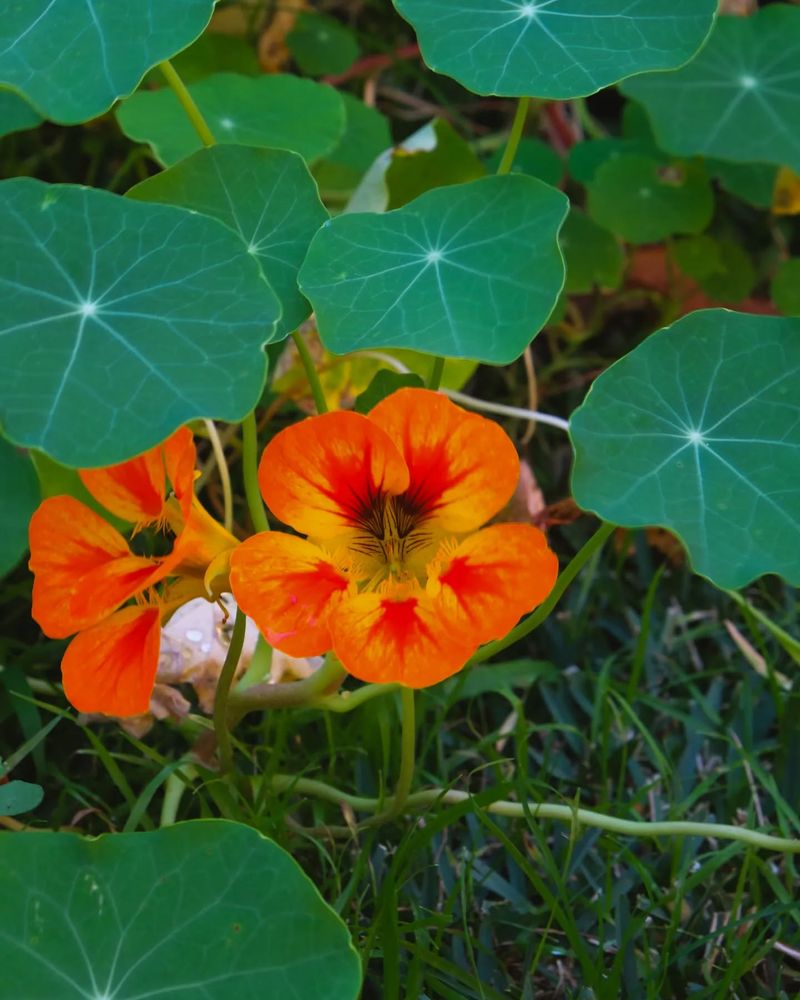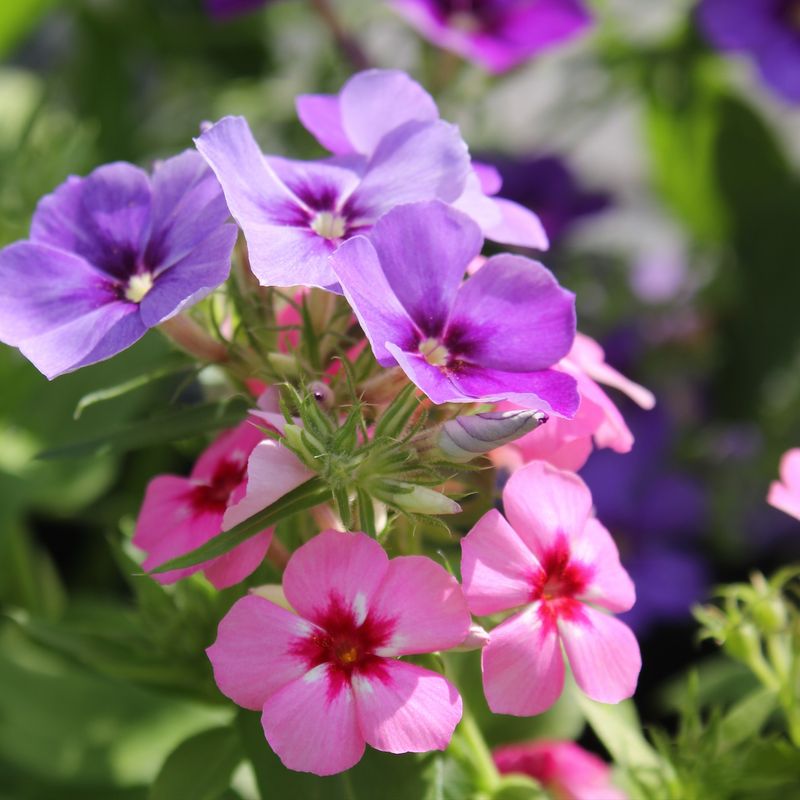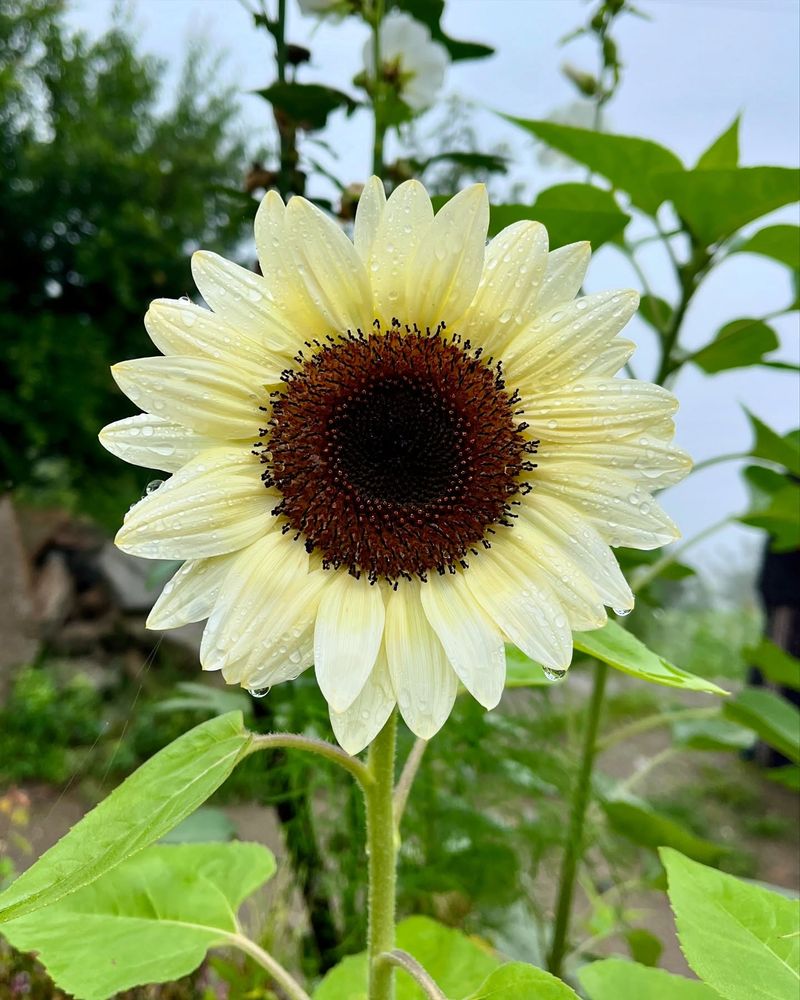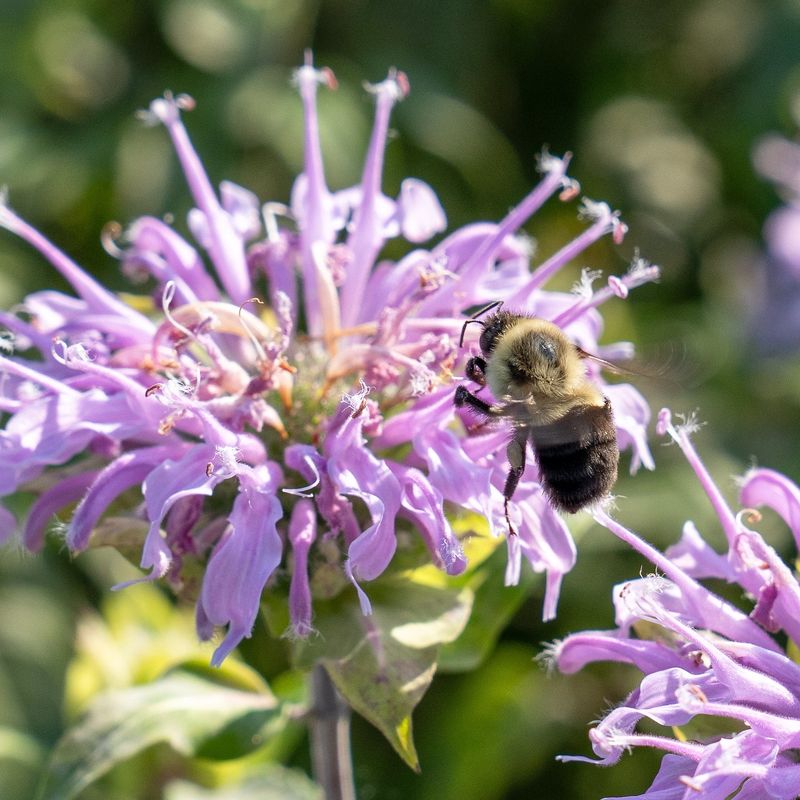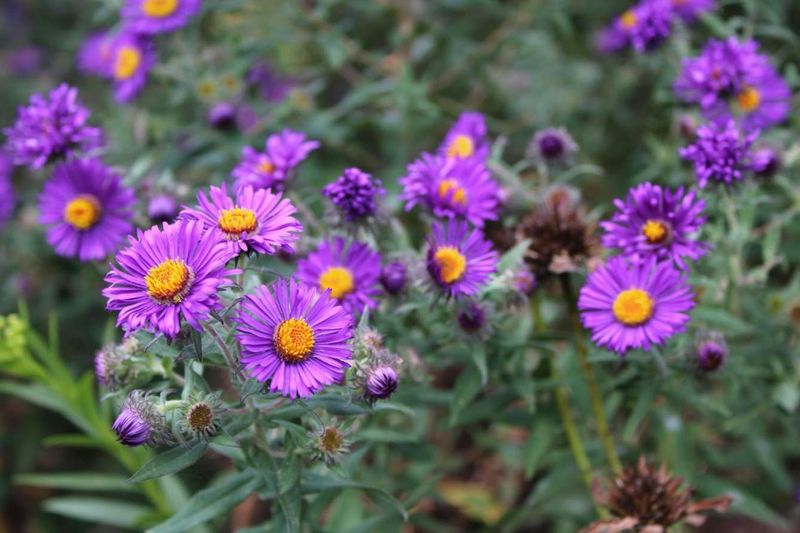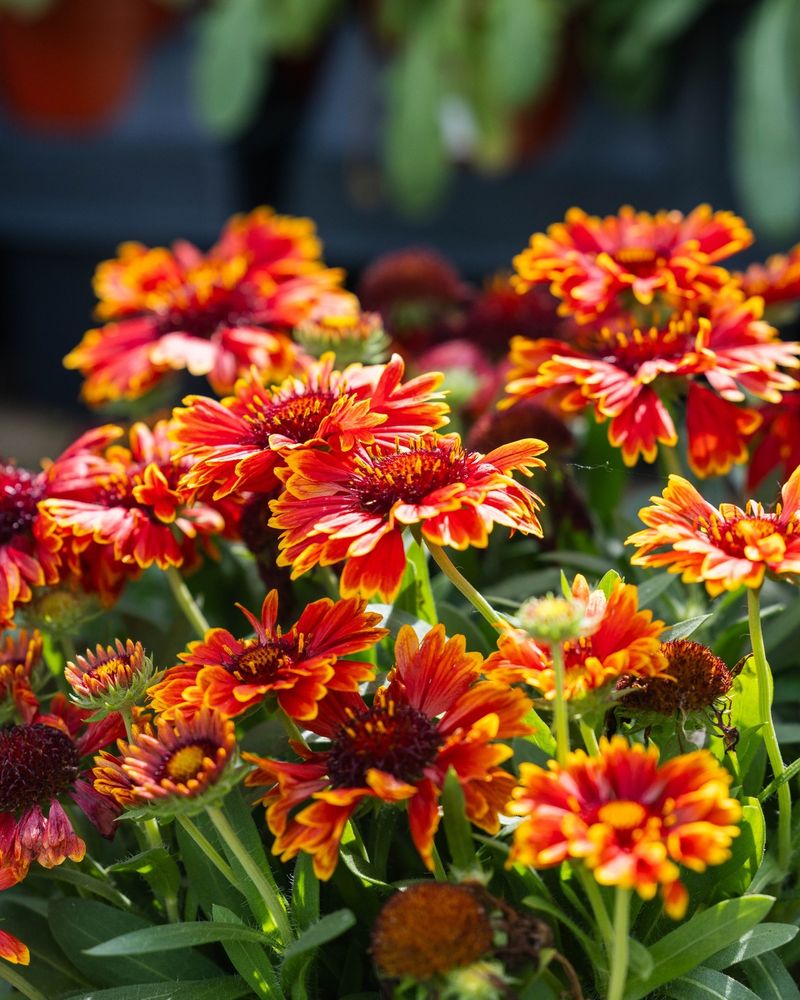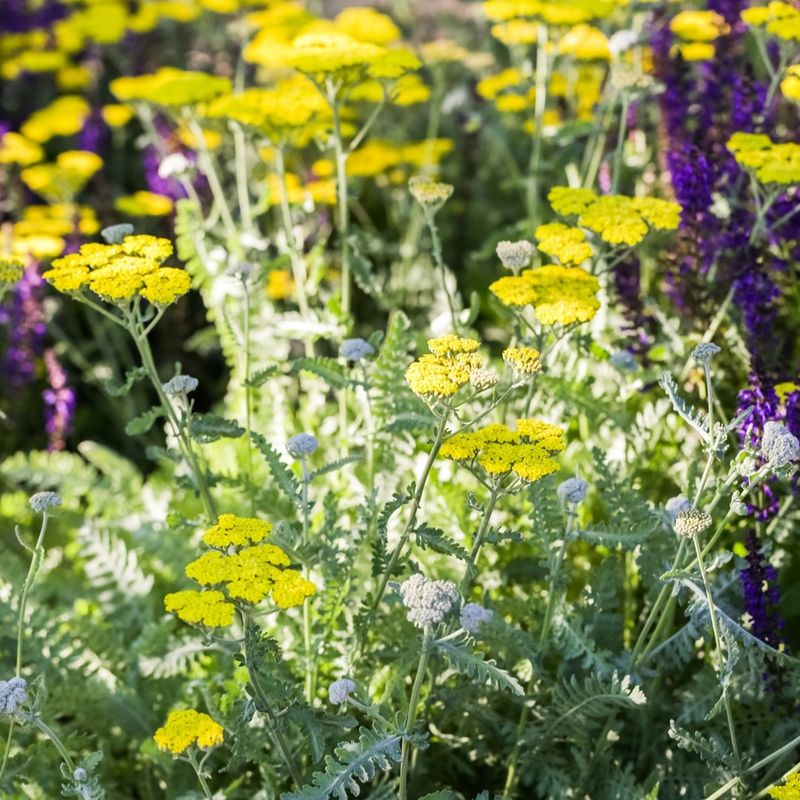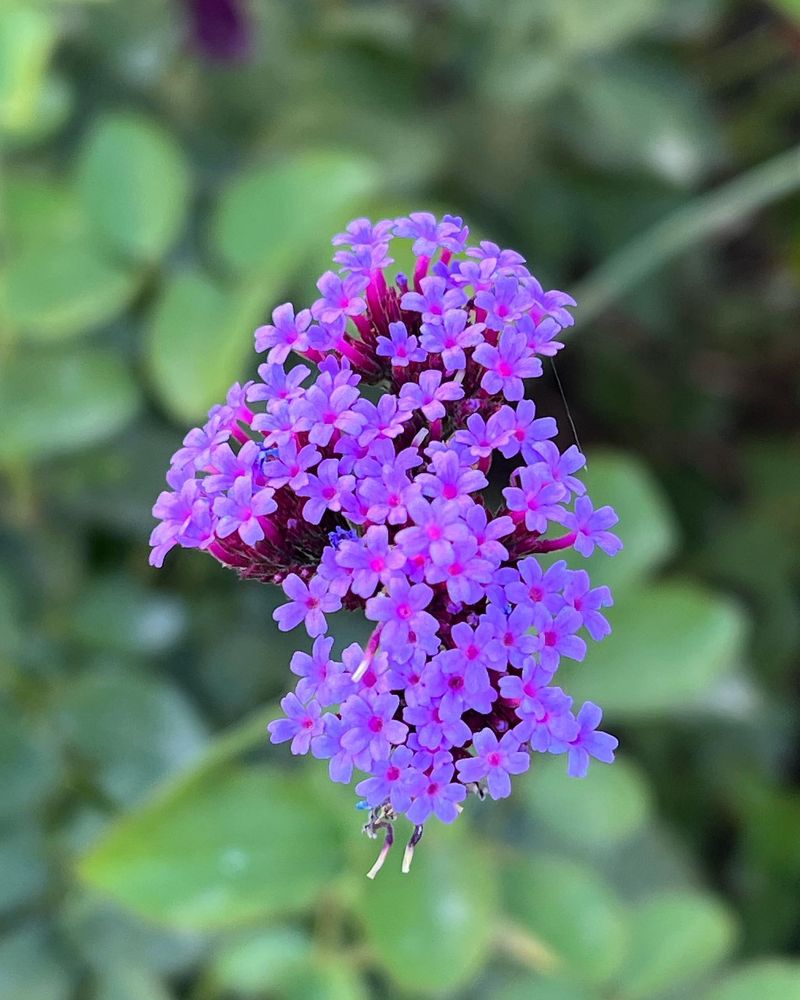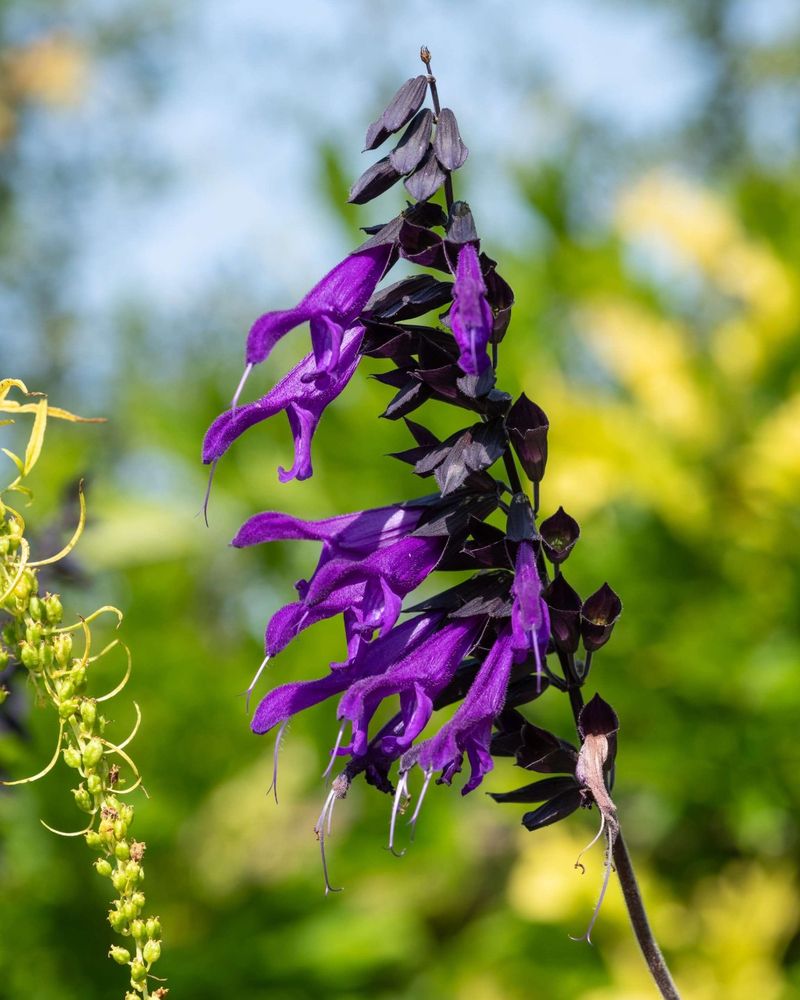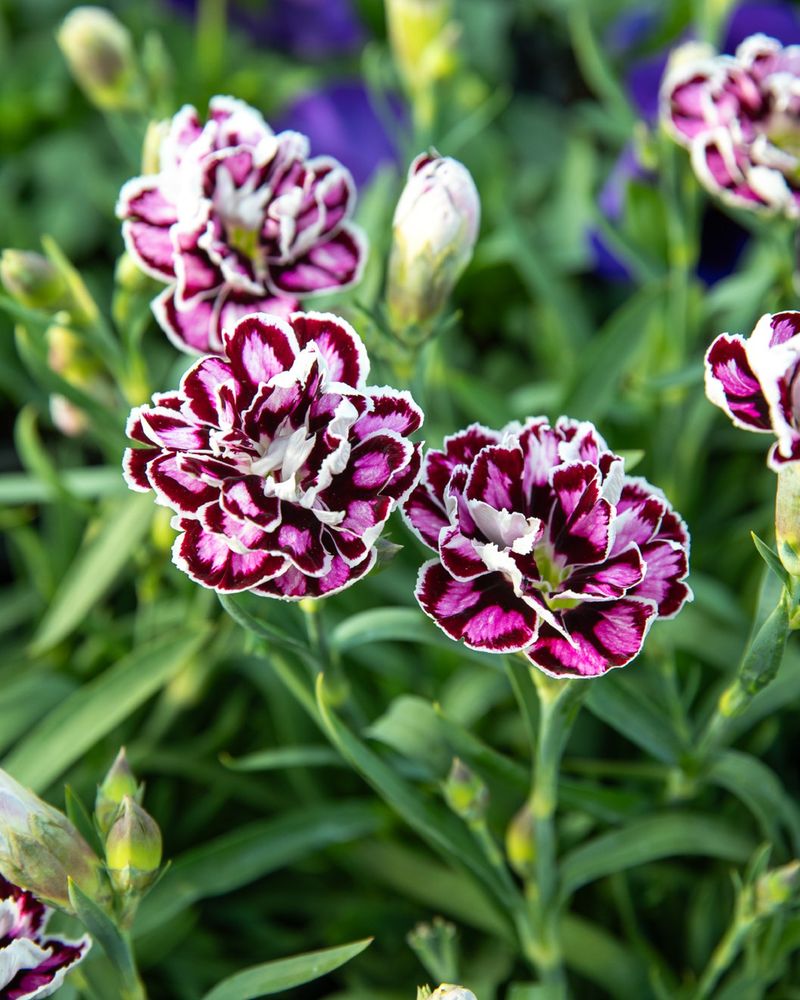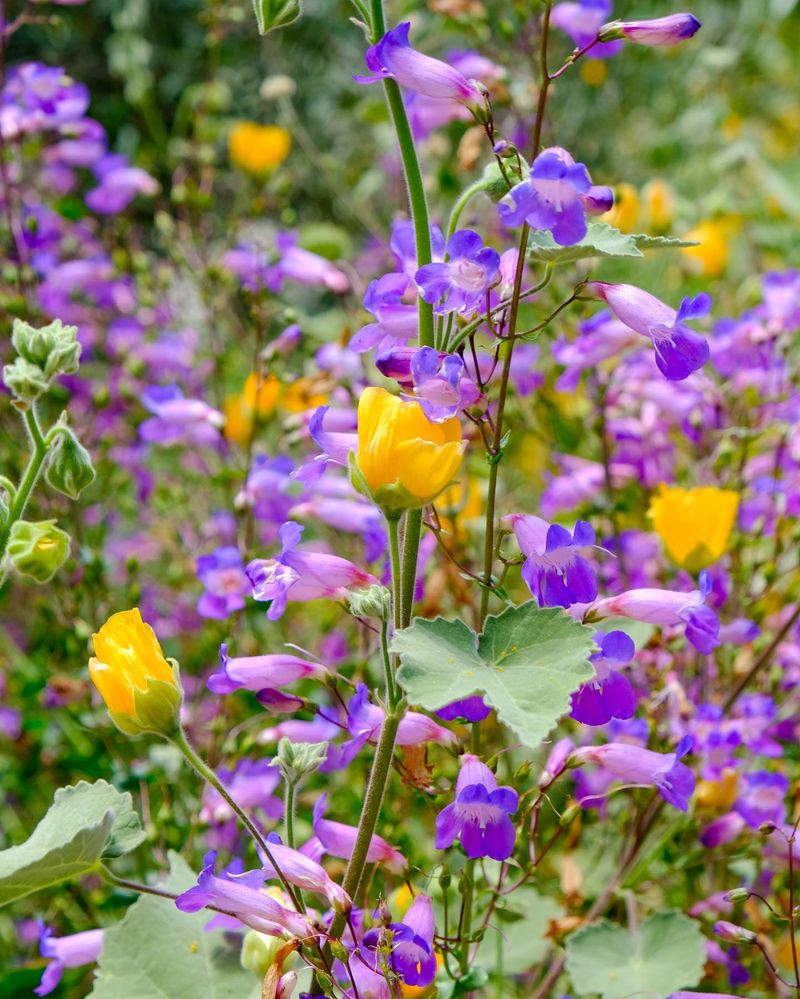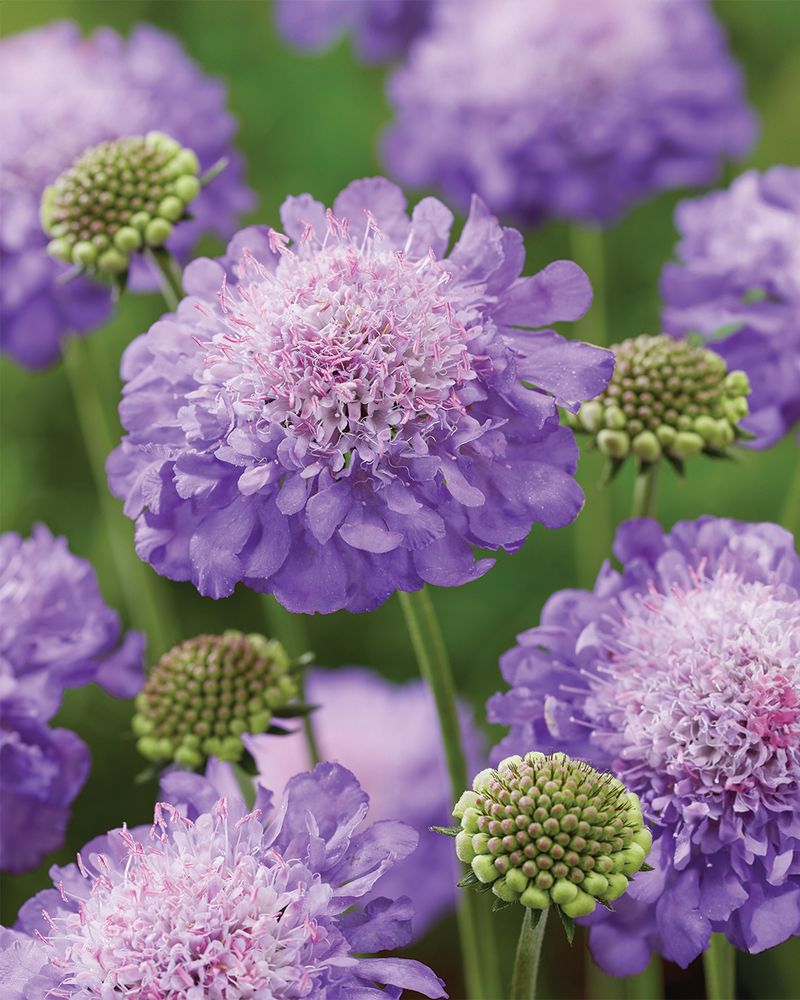If zinnias aren’t quite your vibe, don’t worry—there are plenty of stunning alternatives that will bring the same burst of color and charm to your garden.
Whether you’re looking for something more unique or just want to mix it up, these plants have you covered. From wildflowers to elegant blooms, there’s no shortage of beauty to choose from.
Let’s explore 20 gorgeous plants that can step in and keep your garden vibrant all season long!
1. Cosmos
These airy, daisy-like flowers dance in the slightest breeze, creating a magical atmosphere in any garden. Their feathery foliage provides the perfect backdrop for the pink, white, or crimson blooms that appear from early summer until frost.
Cosmos are incredibly low-maintenance and thrive even in poor soil conditions. Pollinators absolutely love these nectar-rich flowers, making them ecological superstars.
Direct sow the seeds after the last frost and watch them grow quickly into 2-4 foot tall beauties that need very little attention throughout the growing season.
2. Marigolds
Bursting with vibrant orange and yellow hues, marigolds bring a cheerful pop of color to any garden space. Their distinct spicy scent naturally repels many garden pests, making them practical companions for vegetable gardens.
These hardy annuals bloom continuously from spring until fall with minimal care. Growing only 6-24 inches tall depending on the variety, marigolds make excellent border plants or container specimens.
The edible flowers can even garnish salads and desserts, adding both visual appeal and a slightly citrusy flavor to your culinary creations.
3. Sweet Peas
Intoxicatingly fragrant, sweet peas produce waves of delicate blossoms in a rainbow of pastel colors throughout spring and early summer.
Their heavenly scent has made them a cottage garden favorite for generations. The climbing varieties eagerly scramble up trellises, adding vertical interest to garden spaces.
For best results, plant these cool-season annuals in rich, well-draining soil as soon as the ground can be worked in spring.
Regular harvesting encourages more blooms, making sweet peas perfect for fragrant cut flower arrangements that will perfume your entire home.
4. Snapdragons
With their whimsical dragon-shaped flowers that children love to squeeze open and closed, snapdragons bring playful charm to any garden.
Available in nearly every color except true blue, these cool-season bloomers thrive in spring and fall, often taking a break during the hottest summer months. Their tall spikes create excellent vertical interest.
Ranging from dwarf varieties at 6 inches to towering types reaching 3 feet, there’s a snapdragon for every garden space.
5. Black-Eyed Susans
Sunny yellow petals surrounding a distinctive dark center make black-eyed Susans instantly recognizable summer favorites.
Unlike many showier flowers, these native perennials are incredibly drought-tolerant once established, requiring minimal watering.
Their strong stems rarely need staking, even in windy locations. Blooming for weeks from midsummer through fall, they provide reliable color when many other perennials have finished.
Leave the seed heads standing through winter to feed hungry birds and provide visual interest in the snow-covered garden landscape.
6. Lavender
Renowned for its soothing fragrance and silvery-blue foliage, lavender brings Mediterranean charm to any sunny garden spot.
This drought-tolerant perennial thrives in poor, well-drained soil where many other plants struggle. Its aromatic qualities repel deer and rabbits while attracting beneficial pollinators like bees and butterflies.
Beyond its garden beauty, lavender offers countless practical uses. Harvest the stems just as the flowers begin to open for making sachets, bath products, or culinary creations.
7. Dahlias
Available in an astonishing range of colors, shapes, and sizes, dahlias offer something for every gardener’s taste. From tiny pompoms to dinner-plate blooms measuring over 10 inches across, these tubers produce spectacular flowers from midsummer until frost.
Their strong stems make them perfect for cutting gardens. Native to Mexico, dahlias prefer rich soil and regular feeding to fuel their impressive bloom production.
In colder climates, dig up the tubers after the first frost, store them in a cool, dry place over winter, and replant in spring for years of gorgeous blooms.
8. Coneflowers
Tough as nails yet undeniably beautiful, coneflowers (Echinacea) combine prairie wildflower charm with modern breeding innovations.
Traditional purple varieties now share garden space with newer cultivars in white, yellow, orange, and even green hues. Their distinctive raised centers provide textural interest throughout the growing season.
Beyond their ornamental value, coneflowers offer medicinal properties that have been used for centuries.
These long-lived perennials attract butterflies during summer blooming, followed by finches and other birds that feast on the seeds in fall and winter.
9. Nasturtiums
Sporting lily pad-shaped leaves and jewel-toned flowers, nasturtiums bring both beauty and function to the garden.
Every part of this annual plant is edible—the peppery leaves and flowers add zip to salads, while the seed pods can be pickled as a caper substitute. Their trailing or bushy growth habit works beautifully in containers or as ground cover.
Nasturtiums actually bloom more prolifically in poor soil, making them perfect for neglected garden corners. The bright orange, yellow, and red blooms attract beneficial insects while their strong scent confuses pests that might damage nearby vegetable plants.
10. Phlox
Clouds of star-shaped flowers in pink, purple, white, or bicolor patterns make phlox a cottage garden classic. Depending on the variety, these versatile perennials bloom from spring through fall, providing reliable color through multiple seasons.
Their sweet fragrance intensifies in the evening, perfuming the entire garden. Choose between low-growing creeping phlox for rock gardens and borders or tall garden phlox for middle or back of flower beds.
Modern varieties offer improved mildew resistance, solving the main challenge gardeners faced with older cultivars of these otherwise easy-care plants.
11. Sunflowers
Few plants make as bold a statement as the cheerful sunflower with its massive yellow blooms tracking the sun’s daily journey.
Modern breeding has expanded the palette beyond traditional yellow to include bronze, mahogany, and even creamy white varieties. Heights range from dwarf 2-foot types perfect for containers to towering 12-foot giants.
Beyond their ornamental value, sunflowers produce edible seeds enjoyed by both humans and wildlife. Plant a succession of seeds every few weeks for continuous blooms throughout summer and into fall, creating a living privacy screen that doubles as a bird feeding station.
12. Bee Balm
Crown-like whorls of scarlet, pink, or purple flowers make bee balm (Monarda) an architectural standout in the summer garden.
As its name suggests, this native perennial acts as a pollinator magnet, drawing bees, butterflies, and hummingbirds with its nectar-rich blooms. The aromatic foliage gives off a pleasant citrusy-minty scent when brushed against.
Part of the mint family, bee balm spreads gradually to form attractive clumps but isn’t as aggressive as true mint. The leaves can be dried for herbal tea, while the edible flowers make beautiful garnishes for summer drinks and desserts.
13. Asters
Bursting into bloom just as many summer flowers fade, asters extend the garden’s color palette well into fall. Their daisy-like flowers in purple, pink, blue, and white provide essential late-season nectar for butterflies preparing for migration.
Most asters are hardy perennials that return reliably each year with minimal care. Their compact growth habit makes them ideal for front or middle positions in flower borders.
For best performance, divide clumps every few years in spring to maintain vigor and prevent overcrowding.
14. Gaillardia
Also known as blanket flower, gaillardia offers sunset hues of red, orange, and yellow on daisy-like blooms that seem impervious to summer heat.
These tough-as-nails perennials thrive in poor soil and drought conditions where many other flowers struggle. Their long blooming period from early summer until frost provides consistent color.
The bright flowers attract butterflies while deer tend to avoid them. Deadheading spent blooms encourages more flowers, though leaving some seed heads in place allows these short-lived perennials to self-sow gently throughout the garden, ensuring their continued presence year after year.
15. Yarrow
Flat-topped clusters of tiny flowers in white, yellow, pink, or red create landing pads for beneficial insects in the summer garden.
Yarrow’s fern-like foliage provides an attractive textural element even when the plant isn’t in bloom. This ancient herb combines medicinal properties with ornamental appeal in sunny garden spots.
Extremely drought-tolerant once established, yarrow thrives in poor soil with minimal attention. The flowers dry beautifully for everlasting arrangements, holding their color for months.
Modern cultivars offer improved disease resistance and a wider color range than the traditional roadside varieties.
16. Verbena
Clusters of small, vibrant flowers cover verbena plants from spring until frost, creating a continuous display that few annuals can match.
Available in spreading, mounding, or upright forms, there’s a verbena for nearly every garden situation. The flowers come in electric shades of purple, pink, red, and white.
Heat and drought tolerance make verbena a standout performer during summer’s most challenging days. The flat flower clusters serve as perfect landing pads for butterflies, making this plant a must-have for pollinator gardens. In mild winter areas, some varieties perform as short-lived perennials.
17. Salvia
Spikes of tubular flowers in jewel tones of blue, purple, red, or white make salvias striking vertical elements in any garden design.
This diverse genus includes both annuals and perennials, with blooming periods that span from spring through fall depending on the variety. Their aromatic foliage naturally repels many garden pests.
Drought tolerance makes most salvias excellent choices for water-wise gardens. Hummingbirds find their tubular flowers irresistible, darting from spike to spike throughout the day.
18. Dianthus
Often called pinks for their characteristically notched petals (not necessarily their color), dianthus brings spicy clove fragrance and charming blooms to garden edges.
Their compact growth habit makes them perfect for rock gardens, containers, or front-of-border positions. Colors range from white through pink to deep red, often with contrasting centers or edges.
Many varieties bloom heavily in spring, take a short break during summer’s heat, then produce a second flush of flowers in fall.
The blue-green foliage remains attractive even when plants aren’t blooming. Most types are short-lived perennials that may need replacement after 3-4 years.
19. Penstemons
Bell-shaped flowers dangling from tall stems give penstemons an elegant, somewhat wild appearance in the garden. Native to North America, these adaptable perennials come in a stunning array of colors from white and pink to purple, red, and even orange.
Their tubular blooms are perfectly shaped for hummingbird beaks. Most varieties bloom from early summer through fall, providing reliable color when many spring flowers have faded.
Extremely drought-tolerant once established, penstemons thrive in well-drained soil and full sun. The semi-evergreen foliage adds winter interest in milder climates.
20. Scabiosa
Commonly called pincushion flower, scabiosa produces perfectly round blooms with a distinctive raised center resembling a pincushion studded with pins.
The frilly flowers come in soft blues, pinks, whites, and deep purples, floating above delicate foliage on slender stems. Their long blooming period extends from late spring through fall.
Excellent as cut flowers, scabiosa blooms last for days in arrangements. The plants attract numerous beneficial insects while remaining fairly deer-resistant.
Both annual and perennial varieties are available, with the perennials forming neat clumps that gradually increase in size each year.

